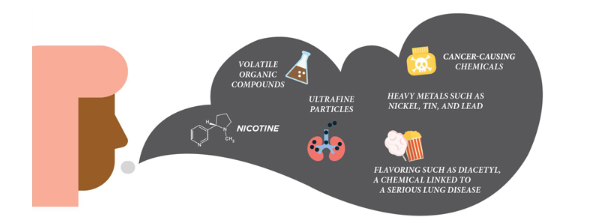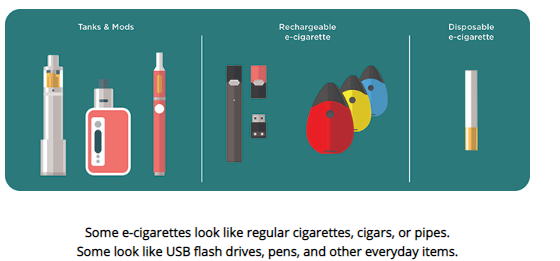Studies show cigarette use among middle and high school students in America decreased between 2011 and 2018. That’s wonderful news! However, the number of middle and high school students who use electronic cigarettes, or e-cigarettes, has increased during that same time and continues to increase.
In 2020, the Stanford Universty School of Medicine conducted a study that found vaping is linked to a substantially increased risk of COVID-19 among teenagers and young adults. Among young people who were tested for the virus that cuases COVID-19, research found those who vaped were five to seven times more likely to be infected than those who did not vape or use e-cigarettes.
It's also important to consider how secondhand cigarette smoke may impact children and youth during the COVID-19 pandemic. Many families are spending more time at home to help stop the spread of the virus. In homes where someone smokes, this also means more exposure to tobacco smoke or e-cigarette "vapor." This can be especially harmful to a child's developing lungs.
Vaping’s popularity has exploded in recent years. Vapes or e-cigarettes are devices that heat a liquid into an aerosol that the user inhales. The aerosol can contain nicotine, cancer-causing chemicals, heavy metals (such as nickel and lead), and flavoring (such as diacetyl, a chemical that can cause a serious lung disease). The many choices of fruity flavors and fun names make vaping extremely appealing to a much younger audience.

No matter how it's delivered, nicotine is addictive and harmful for youth and teens. So, what exactly are the risks?
· Brain development: Youth and young adults are at risk for long-term and long-lasting effects of exposing their developing brains to nicotine. These risks include nicotine addiction, mood disorders, and inability to control impulses. Nicotine also changes synapses, which are where nerve signals are passed from one neuron to another. This can harm the parts of the brain that controls attention and learning.
· Addiction: The brain continues to grow until mid-twenties. Since addiction is a form of learning, youth and teens can get addicted more easily than adults. The nicotine in e-cigarettes and other tobacco products can make it more likely that a teen or young adult can become addicted to other drugs.
· Behavior Risks: Teens and young adults who use e-cigarettes are more likely to use other tobacco products, such as regular cigarettes, cigars, hookah, and smokeless tobacco.

Start a conversation
Talking with your middle or high school aged kids about vaping or e-cigarettes can be a tough conversation to have. Lucky for you, an experienced team of health professionals have thought about every question they could ask and what you need to know to get the conversation started. Check out this Tip Sheet for Parents.
The Surgeon General’s warning
In December, 2018 the U.S. Surgeon General declared e-cigarette use among youth an epidemic in the United States. You can read the full report here.
Information for parents and caregivers who use e-cigarettes
The secondhand smoke/vapor from e-cigarettes is harmful to children’s growing lungs. The best way to protect your children is to never smoke or vape near them. The e-cigarette solution can also poison children if it’s swallowed or gets on children’s skin. To get help with quitting smoking, talk to your doctor, call 1-800-QuitNow or Text QUIT to 47848.
Additional resources for teens and families
Vaping and its connection to anxiety and depression